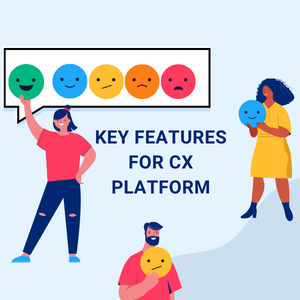- Sales.
- <a></a>How can you be a good salesperson?
- <a></a>What are the revenue-generating activities in sales?
- <a></a>Tools startups can use to improve sales.
- <a></a>How can you follow up with a customer?
- <a></a>Why do salespeople dislike CRM?
- Tips and tricks for using CRM.
- Best practices for archiving everyday goals.
An Interview with Scott Marker, the B2B sales guru, book author, CEO & Founder at MCA² / NIA Franchise Owner
Sales.
Sales is a term used to describe the methods and ways used to sell services or goods.
For any company to grow, sales must improve.
Companies have sales organizations divided into different groups depending on the region they are selling to and the service or product they are selling.
How can you be a good salesperson?
To be a good salesperson, you need to be spending time talking to buyers, listening to them, their challenges, and untangling how your company offerings might help solve their problems and convert them to potential buyers.
But most salespeople don’t do that.
They spend a lot of their time doing non-revenue generating activities like self-generating leads, data entry in their CRM, report preparation, and meetings.
A great company leader should focus on removing those obstacles off the sales’ way. At the next sales meeting ask: ‘What can I do to get that stuff out of your way?’
What are the revenue-generating activities in sales?
There are many activities that a salesperson can do to increase the sales of the company.
First, if you can do demand generation very well, you don’t have to do a lot of traditional sales. Let marketing do their job.
If you are a startup though, you have to do many outbound activities like traditional sales and marketing. As the company progresses, you will have to switch to inbound (e.g. start getting referrals from partners) and do less of everybody hates – bugging people for buying what they don’t need.
Second, you can warm your conversations with customers by improving your profile on LinkedIn or doing a podcast to increase familiarity with your company and brand.
Tools startups can use to improve sales.
When you are a startup, no one knows who you are, so you have to put sales a priority.
There are so many tools you can use, and here are some.
First, you can use CRM. Any startup company is supposed to have CRM. Since there is a lot of customer search, CRM can help store customer information needed for interviews in the future.
The second is the website. Website is essential since clients can find all the information they need about the company there.
Also, try and join like-minded professionals around the world and ask them their strategies. They can be accommodating.
Startups should also have a business page.
How can you follow up with a customer?
Automation is the best thing that happened, and the worst. You have to be looking at how many people/vendors are bugging your buyers daily.
You can use many ways to follow up with a customer, but the best is CRM automation follow-up. If you have so many prospects, it is hard to remember what people (even those who are highly interested in your product) told you.
Using CRM right will help the org work better as a team. When the squad has transparency on the pipeline in the CRM, they can support each other and have their back.
Why do salespeople dislike CRM?
The main reason is, CRM is a data entry nightmare. Sales leaders also put pressure on sales professionals to work off-hours to put all the data in CRM.
An interesting fact no one talks about is that CRM used by outside salespeople and inside salespeople is different.
Outside sales who’re on their feet all day and connect with prospects at tradeshows, which spills over to LinkedIn and Facebook connections, mobile calls, and what not, just don’t have time to get all that data into the CRM.
As a sales leader, you need to give them that time to document – not at night, not overworking, not on the weekend.
Inside salespeople have more manageable tasks since some AI tools can help listen to the conversations better, analyze better, take all the notes, and put them in CRM.
Tips and tricks for using CRM.
The first tip is to have a personal assistant who makes sure that everything in the CRM looks perfect.
The second is having a sales leader who understands utilizing the intelligence gained from listening to texts and all the information coming in so that when you reach customers for a meeting. You can remember everything they said. What – if not this – will keep the prospecting memory when the salesperson is gone (that happens, right?).
Third, as we said above, is as a company, sit and define how we’re going to get the data we collect into the CRM. And make it less for our outside salespeople.
Best practices for archiving everyday goals.
To achieve the daily goals, you can use random alerts, reminders, and dashboards.
If you’re lucky be doing enterprise large accounts, you can be getting alerts that are actually useful. But if as many of the salespeople you need to deal with a lot of prospecting accounts, alerts will become an annoying burden very soon.
You have to be diligent in checking all your follow-ups and get your day structured around that.
Tip: if you have a lot of accounts, you can color code them not to drop the ball (A-B-C-D accounts).
Tip: If it is a huge opportunity, you have to do some research and prepare by reviewing your CRM notes, and then the customer’s activities on Facebook, LinkedIn and listen to their podcasts not to scramble looking for what to talk to them about at the morning of the call...
Huge Tip: Blitz list. Treat your competitors’ salespeople as leads. When they leave your competitor’s organization, you can quickly win those accounts – too often the salespeople are the main touchpoint for the client, even in large organizations.
Another Tip: when your competitor gets bought out by a larger company, usually their service drops… And here you go your other blitz list.
Remember: Most large opportunities are always opportunities. Because things change.
If you want to watch the full conversation, put one hour aside, watch the video, and subscribe to our YouTube channel!
Contact Customerization at [email protected]





